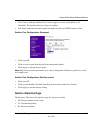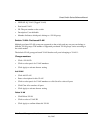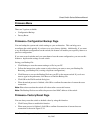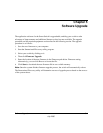
Smart Switch Series Software Manual
4-12 Web-Based Management Interface
July 2005
Switch> Advanced> Spanning Tree Page
• Fast Link: When a port running the standard Spanning Tree Protocol (STP) is connected, it
will go through the STP negotiation ( listening -> learning -> forwarding or blocking ) before
it will be fully available. If a server is trying to access a client through the switch running the
STP negotiation, it will not be able to connect to it immediately. This can be a problem for
some networks. Fastlink mode solves this problem by setting the port directly to forwarding
mode, thus allowing any server access request to be forwarded. Fastlink mode can cause
temporary loops in your network, but the STP will eliminate them. Fastlink is best used on end
node ports, i.e. ports connected to PCs or servers, to avoid network loops.
• Bridge Priority: Priority setting of this switch in the Spanning Tree.
• Bridge Max Age: Amount of time before a configuration message is discarded by the system.
• Bridge Hello Time: Interval between configuration messages sent by the Spanning Tree
algorithm.
• Bridge Forward Delay: Amount of time system spends in 'learning' and 'listening' states.
• Path Cost: The switch uses this to determine which port is the forwarding port. All other
factors equal, the path with the lowest cost to the root bridge will be the active path.
• Path Priority: STP bases on this to determine the port to use for forwarding. The port with the
lowest number has the highest priority.
Switch> Advanced> SNMP
SNMP page allows you to limit the IP address which can access the MIB of the switch and which
the switch will send trap to. The switch will only respond to requests from computers with the IP
address in the list. You can also select the traps which the switch will send to the hosts in the
following trap events. The setting of a host will not be active until it is set to “Enable” in the
Admin field.
Trap Events :
• Device bootup - The switch generates an SNMP trap when it reboots.
• Authentication fail - The switch generates an SNMP trap when a host tries to gain access to the
switch but the host's IP is not in the SNMP host table.
• Link Up/Down - The switch generates an SNMP trap when one of its ports changes its link
status.


















